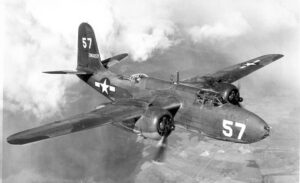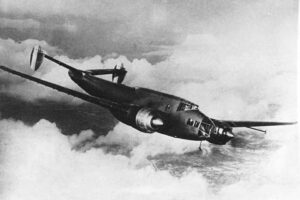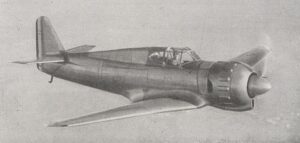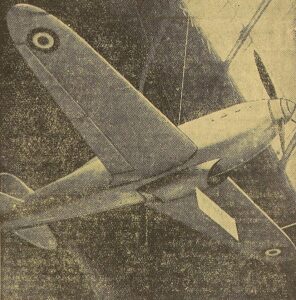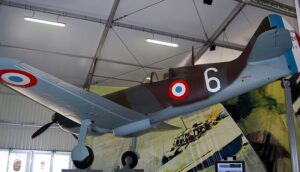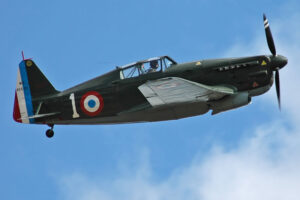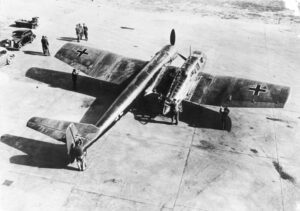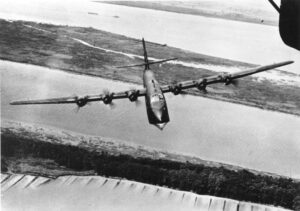Time Period: World War II
Country of Origin: United States
Type: Bomber Aircraft (Strategic, Heavy)
Manufacturer: Boeing
Boeing B-29 Superfortress Aircraft Overview
The Boeing B-29 Superfortress was a four-engine heavy bomber aircraft developed by Boeing during World War II. It was one of the largest and most advanced bombers of its time and was used extensively by the United States Army Air Forces (USAAF) in the Pacific theater against Japan.
The B-29 had several advanced features, including a pressurized cabin, remote-controlled gun turrets, and a sophisticated bombing system. It could carry up to 20,000 pounds of bombs and was heavily armed with machine guns and cannons.
The most famous mission of the B-29 was the dropping of atomic bombs on the Japanese cities of Hiroshima and Nagasaki in August 1945, which played a significant role in ending the war.
After the war, the B-29 was used in various roles, including reconnaissance and weather research, and was also extensively modified into the more advanced B-50 and B-52 bomber aircraft.
Today, a few B-29s remain in flying condition and are used for public demonstrations and airshows, showcasing the advanced technology and historic significance of this iconic aircraft.
Boeing B-29 Superfortress Specifications
- Crew: 11 (Pilot, Co-pilot, Bombardier, Flight Engineer, Navigator, Radio Operator, Radar Observer, Right Gunner, Left Gunner, Central Fire Control, Tail Gunner)
- Length: 99 ft 0 in (30.18 m)
- Wingspan: 141 ft 3 in (43.05 m)
- Height: 27 ft 9 in (8.46 m)
- Wing area: 1,736 sq ft (161.3 m2)
- Aspect ratio: 11.5
- Airfoil: root: Boeing 117 (22%); tip: Boeing 117 (9%)
- Zero-lift drag coefficient: 0.0241
- Frontal area: 41.16 sq ft (3.824 m2)
- Empty weight: 74,500 lb (33,793 kg)
- Gross weight: 120,000 lb (54,431 kg)
- Max takeoff weight: 133,500 lb (60,555 kg). 135,000 lb (61,000 kg) combat overload
- Powerplant: 4 × Wright R-3350-23 Duplex-Cyclone 18-cylinder air-cooled turbo supercharged radial piston engines, 2,200 hp (1,600 kW) each
- Propellers: 4-bladed constant-speed fully-feathering propellers, 16 ft 7 in (5.05 m) diameter
Boeing B-29 Superfortress Performance
- Maximum speed: 357 mph (575 km/h, 310 kn)
- Cruise speed: 220 mph (350 km/h, 190 kn)
- Stall speed: 105 mph (169 km/h, 91 kn)
- Range: 3,250 mi (5,230 km, 2,820 nmi)
- Ferry range: 5,600 mi (9,000 km, 4,900 nmi)
- Service ceiling: 31,850 ft (9,710 m)
- Rate of climb: 900 ft/min (4.6 m/s)
- Lift-to-drag: 16.8
- Wing loading: 69.12 lb/sq ft (337.5 kg/m2)
- Power/mass: 0.073 hp/lb (0.120 kW/kg)
Boeing B-29 Superfortress Armament
- Guns:
- 10× .50 in (12.7 mm) Browning M2/ANs in remote-controlled turrets (omitted from Silverplate B-29s)
- 2× .50 BMG and 1× 20 mm M2 cannon in tail position (the cannon was later removed)
- Bombs:
- 5,000 lb (2,300 kg) over 1,600 mi (2,600 km; 1,400 nmi) radius at high altitude
- 12,000 lb (5,400 kg) over 1,600 mi (2,600 km; 1,400 nmi) radius at medium altitude
- 20,000 lb (9,100 kg) maximum over short distances at low altitude
- Could be modified to carry two 22,000 lb (10,000 kg) Grand Slam bombs externally.
- Mark I, Mark III, Mark 4, and Mark 6 nuclear bombs (only Silverplate versions of the aircraft).
Boeing B-29 Superfortress Image Gallery
More Boeing Aircraft
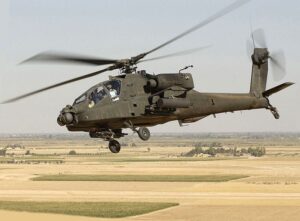
Boeing AH-64 Apache
The Boeing AH-64 Apache is an American twin-turboshaft attack helicopter primarily operated by the U.S. Army but used by many nations.

Boeing-Stearman Model 75
The Boeing-Stearman Model 75 was an American biplane formerly used as a military trainer aircraft by the U.S. Air Forces and U.S. Navy.
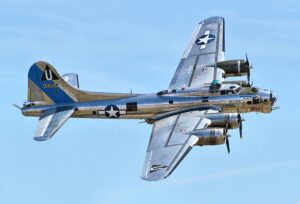
Boeing B-17 Flying Fortress
The Boeing B-17 Flying Fortress is an American four-engined heavy bomber developed for the United States Army Air Corps (USAAC) in the 1930s.

General Dynamics-Boeing AFTI/F-111 Aardvark
The General Dynamics-Boeing AFTI/F-111 Aardvark was a research aircraft used to test a supercritical mission adaptive wing (MAW) built by Boeing.

Boeing P-26 Peashooter
The Boeing P-26 Peashooter was the first all-metal American fighter aircraft and the first pursuit monoplane to join the Army Air Cops.



